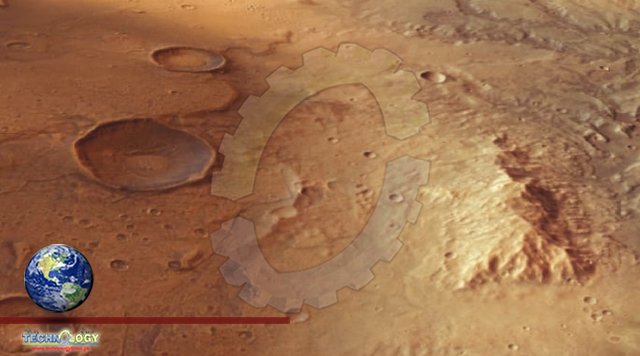Zhang claimed that the Zhurong had travelled 1,921 metres (2,100 yards) and spent 358 days on the Martian surface, far exceeding the mission’s planned three-month duration.

China’s Mars rover Zhurong, which has been sleeping on the surface of the red planet for longer than expected since May 2022, has likely experienced an excessive buildup of sand and dust, according to the mission designer, who broke months of silence regarding the spacecraft’s condition.
The fully robotic Mars rover Zhurong, which took its name from a mythical Chinese god of fire, was predicted to have awoken in December 2022 after going into a planned sleep mode in May 2022 as a result of reduced solar radiation brought on by the arrival of winter on Mars.
Zhang Rongqiao, the chief designer of China’s Mars exploration programme stated that a buildup of dust most likely had an impact on power generation and the rover’s capacity to awaken. This information was reported on Tuesday by state television in China, CCTV.
Zhang claimed that the Zhurong had travelled 1,921 metres (2,100 yards) and spent 358 days on the Martian surface, far exceeding the mission’s planned three-month duration.
According to the University of Arizona, which oversees a high-resolution camera on board NASA’s Mars Reconnaissance Orbiter, images returned from Mars showed the Chinese rover had not changed its position since at least between September 8, 2022 and February 7, 2023. It is the most potent camera ever sent to another planet.
Despite the fact that it was not certain that the Zhurong would ever reawaken, Andrew Jones, a reporter who specialises in China’s space programme, tweeted on Tuesday that an official update on the rover’s status was welcome. Therefore, this is not definitive.
Jones noted in a tweet that it was difficult to determine the amount of dust covering Zhurong’s solar panels from orbit, adding that it might still awaken during the summer solstice on Mars in July. “It can use active dust-cleaning techniques if it can wake up. But it might already be lost,” he continued.
After making a successful landing in May 2021, the 240 kg (530 lb) Zhurong, which carries six scientific instruments including a high-resolution topography camera, was tasked with examining the planet’s surface soil and atmosphere.
Zhurong, powered by solar energy, also used a ground-penetrating radar to search for any indications of prehistoric life, including any subsurface water and ice. Zhurong isn’t the only robotic rover operating on Mars; NASA‘s Perseverance and Curiosity have both been exploring the planet’s surface for more than two years and about ten years, respectively.